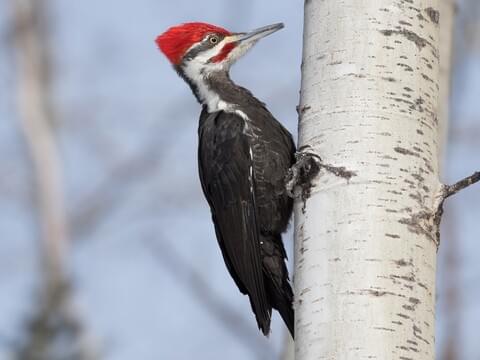Introducing the Keys of Woodpeckers: Actions, Habitat, and Much More
Woodpeckers, with their unique actions and specialized adaptations, have actually lengthy amazed scientists and nature fanatics alike. These impressive birds have a variety of intriguing keys that dropped light on their survival approaches, environment preferences, and complex communication approaches. By revealing the secrets surrounding woodpeckers' behavior and habitat options, a deeper understanding of these avian wonders emerges, offering a look right into their fascinating world. What makes these birds absolutely remarkable, and how do they browse their environment with such precision and ability? Allow's discover the captivating world of woodpeckers and decipher the enigmatic information that make them such appealing subjects of study.
Woodpecker Habits Insights
In taking a look at woodpecker actions, a fascinating display of specialized abilities and adjustments emerges, shedding light on their amazing ecological particular niche. Woodpeckers, recognized for their distinctive drumming on trees, possess a range of behavioral qualities that add to their survival and success in their atmosphere.
Moreover, woodpeckers display an one-of-a-kind feeding behavior identified by their capacity to extract bugs from tree bark using their specialized beaks. Their lengthy, barbed tongues aid in capturing victim, while their strong neck muscles give stability and precision throughout pecking movements. This feeding method permits woodpeckers to access covert insect larvae and extract them with remarkable performance.
Environment Preferences and Selection
What elements influence the habitat choices and selection of woodpeckers? One important variable affecting woodpecker habitat option is the schedule of appropriate nesting sites. Woodpeckers typically like forests with a mix of mature trees that give adequate chances for dental caries excavation.
Additionally, woodpeckers show a choice for environments with an abundant supply of food sources. They are mainly insectivorous, preying on beetles, ants, larvae, and other pests discovered in worn out timber or tree bark. Woodpeckers tend to prefer wooded areas with a varied insect populace to meet their dietary demands.
Moreover, the presence of dead or rotting trees is another vital element in woodpecker habitat selection. These trees not only give food sources but also supply suitable substrate for tooth cavity excavation. Dead trees are vital for the maintenance of healthy woodpecker populaces, as they play an essential function in the woodpeckers' life cycle and environment dynamics.
Feeding Habits and Diet Structure
Woodpeckers demonstrate a specialized feeding behavior concentrated on foraging for insects within various habitats. In addition to insects, woodpeckers also eat tree sap, fruits, nuts, and seeds, including range to their diet regimen depending on go the period and schedule of food resources.
The foraging strategies of woodpeckers are look what i found well-adapted to their arboreal lifestyle. Woodpeckers play a crucial duty in preserving the wellness of forests by regulating insect populations and assisting in the disintegration of timber.
Drumming Sounds and Communication
Using quick drumming audios on different surface areas, woodpeckers utilize an unique type of communication to signify area boundaries and attract mates. This drumming behavior is not just a means of interaction but also works as a means for woodpeckers to develop their presence within a particular area. The strength, speed, and pattern of the drumming can convey important details to other woodpeckers in the location.
Woodpeckers make use of drumming sounds to introduce their presence in a region and to warn off possible intruders. The loud and repetitive nature of the drumming acts as a clear signal to various other woodpeckers that the location is already declared. This assists in minimizing conflicts and lessening physical battles between individuals.

Survival Adaptations and Specialized Makeup

Conclusion
To conclude, woodpeckers show distinct habits, such as drumming noises for communication, and have actually specialized anatomy for survival in their selected habitats. Their feeding routines and diet plan make-up better demonstrate their versatility to numerous environments. By understanding these aspects of woodpeckers, researchers and guardians can much better safeguard and protect these remarkable birds and their environments.